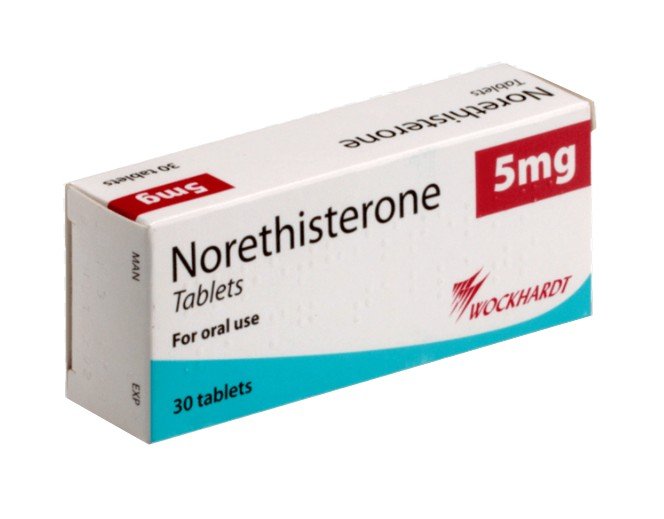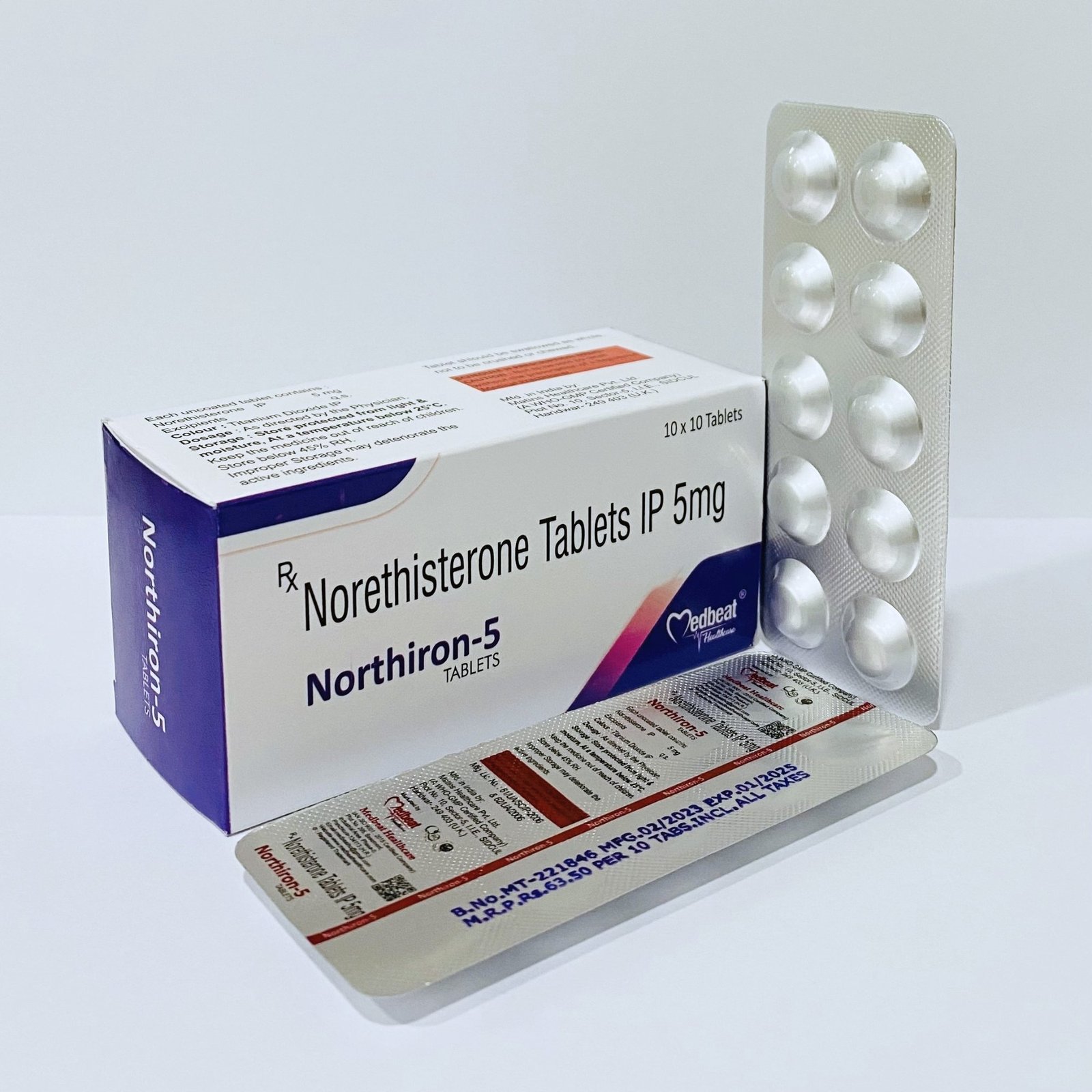What is Norethisterone?
How does it work?
What are the benefits of taking it?
How do I use it and its dosage?
Always use this medicine exactly as your doctor has told you. If in doubt, consult your doctor or pharmacist again.
Remember to take your medicine. Your doctor will indicate the duration of your treatment with Primolut-Nor. Do not stop the treatment earlier, as the desired effect may not be obtained.
The tablets should be swallowed whole with some liquid.
In case you need additional contraceptive protection, you should use non-hormonal contraceptive methods (barrier, for example, a condom).
For the treatment of secondary amenorrhea (lack of menstruation):
Your doctor will tell you the dose you should take and should tell you to take estrogen medication for about 14 days before starting treatment with Primolut-Nor. Thereafter you will take between 5 and 10 mg of norethisterone acetate per day (maximum of one Primolut-Nor 10 mg tablet, once per day) for 10 days, thus ending the treatment. Menstruation will occur a few days after taking the last tablet.
In patients with endogenous estrogen production, 5 mg of norethisterone acetate will be administered twice a day, from day 16 to 25 of the cycle, taking into account that the first day of menstruation is considered the first day of the cycle.
For the treatment of endometriosis (growth of the endometrium – the tissue that lines the uterus – outside the uterus):
Treatment should begin between day 1 and day 5 of the cycle with 5 mg of norethisterone acetate twice daily. In case of staining, the dose can be increased up to 10 mg of norethisterone acetate twice a day (one tablet of Primolut-Nor 10 mg twice a day), decreasing to the initial dose if bleeding (or staining) stops. The treatment must be maintained for at least 4 to 6 months. With the uninterrupted daily intake, you will probably have neither ovulations nor menstruations.
Side effects & precautions
Like all medicines, Primolut-Nor can cause side effects, although not everybody gets them.
Adverse effects are more frequent during the first months of treatment and decrease with the duration of treatment.
Listed below are the adverse effects, ordered by body systems and frequencies, that have been described in patients receiving Primolut-Nor, although a causal relationship between the adverse effect and treatment has not always been established.
Very common: may affect more than 1 in 10 people
- uterine/vaginal bleeding including spotting, hypomenorrhea (low menstruation)
- These side effects have only been reported when the medicine is used to treat endometriosis (growth of the endometrium – the tissue that lines the uterus – outside the uterus).
Common: may affect up to 1 in 10 people
- headache
- sickness
- amenorrhea (lack of menstruation)
- This side effect has only been reported when the medicine for the treatment of endometriosis (growth of the endometrium-tissue lining the uterus-outside the uterus) is administered.
- edema (fluid retention)
Uncommon: may affect up to 1 in 100 people
- Migraine
Rare: may affect up to 1 in 1,000 people
- hypersensitivity reactions (allergy)
- hives, rash (rash)
Very rare: may affect up to 1 in 10,000 people
- visual disturbances
- dyspnea (shortness of breath)
Frequency not known: cannot be estimated from the available data
- thromboembolism (formation of clots in the blood vessels)
- liver tumors that have led to intra-abdominal bleeding
- chloasma (brown spots on the skin)
- migraine-type headaches (headaches) or increased frequency of unusually severe headaches, sudden changes in perception, early signs of thrombophlebitis or thromboembolic symptoms (such as unusual pain or swelling of the leg (s), pain when breathing or cough for no apparent reason), feeling of pain or tightness in the chest, the appearance of jaundice (yellowing of the whites of the eyes and skin), inflammation of the liver without jaundice, generalized itching, a significant increase in blood pressure.



Reviews
There are no reviews yet.